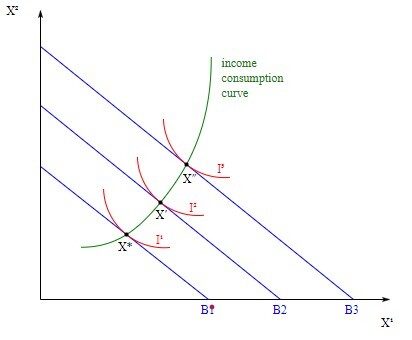
 Data Structure
Data Structure Networking
Networking RDBMS
RDBMS Operating System
Operating System Java
Java MS Excel
MS Excel iOS
iOS HTML
HTML CSS
CSS Android
Android Python
Python C Programming
C Programming C++
C++ C#
C# MongoDB
MongoDB MySQL
MySQL Javascript
Javascript PHP
PHP
- Selected Reading
- UPSC IAS Exams Notes
- Developer's Best Practices
- Questions and Answers
- Effective Resume Writing
- HR Interview Questions
- Computer Glossary
- Who is Who
Normal Goods: Relationship with Demand, and Examples
What are Normal Goods?
Normal goods are those goods that have a positive elasticity relation with demand and wages. When the wage of a consumer increases, he/she buys more normal goods, and when the wages go down, they buy fewer normal goods. So, normal goods refer to the positive level of demand when wages go up and down of the consumer.

Normal goods have a positive elastic relationship with demand and income. This means that the movement in demand and income is in the same direction. When income increases, consumers tend to buy more normal goods as their budget increases. On the other hand, when wages decrease and people have lower budgets, their demand for products goes down and they partake less in eating out or getting involved in leisure activities. So, when income comes down, the demand for normal goods also comes down. When the budget of a person goes up, he/she tends to buy products that have more utility or products that are more satisfying in nature. These products are known as normal goods.
Relationship of Normal Goods and Demand
The table below explains the relationship of Normal Goods and Demand in an economy.
| General Demand | Demand for normal goods rises with increasing income. |
| Type of relationship with the demand curve | With income changes, and the demand curve normal goods have a positive or direct relationship. |
| Income elasticity | Normal goods have a direct or positive correlation with income elasticity. |
| Price differences | The demand for normal goods goes down with increasing prices. |
Explanation with Examples of Normal Goods
| Groceries | The effect of a rise in wages can be seen in people's choices of grocery items more often than not. For example, when a person's budget for groceries increases they may buy more organic food and vegetables instead of fresh herbs and frozen foods. People may also resort to buying more seasonings than dry herbs when their incomes go up. Also, people may ditch pre-made tea bags and ground coffee, buying coffee beans and tea leaves instead. |
| Transportation | People may tend to use personal vehicles, including sports and luxury cars when their income increases. They usually prefer not to use public transportation when they have higher incomes. Moreover, people may opt for car rentals, taxis, and personal drivers when their income is high. |
| Travel | People travel irrespective of their financial conditions but when their income is high, they may choose to spend more on traveling. They may opt for flying which is more expensive than road trips. They may also stay in luxurious hotels and resorts instead of normal ones. That means people tend to switch to more luxurious vacations when their income is high. |
| Name brands | People may shift their choice to name brands when their income is high. For example, they may buy designer clothing, shoes, and other items instead of generic brands. They may also opt for name-brand cleaning products, furniture, and other decoration items. |
Conclusion
Price is an important factor when determining inferior or normal goods. It has been generally observed that people buy more of costlier items when their income is better making costlier normal goods while less priced inferior goods.
FAQs
Qns 1. What is a normal good?
Ans. Normal goods are those goods that have a positive elasticity relation with demand and wages. When the wage of a consumer increases, he/she buys more normal goods, and when the wages go down, they buy fewer normal goods. So, normal goods refer to the positive level of demand when wages go up and down of the consumer.
Qns 2. Give three examples of normal goods.
Ans. Food items such as organic foods, seasonings, coffee beans, and tea leaves, etc.

